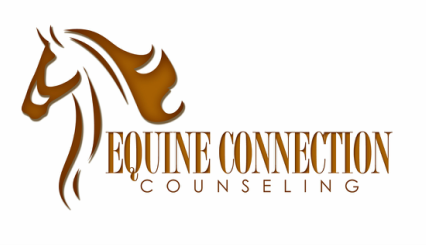In Part 1 we are discussing what happens as clients begin counseling at ECC:
Paperwork. The most boring part of the counseling process is filling out paperwork! Many counseling practices these days make their intake packet available by downloading from their website or e-mailing you an electronic copy. Others ask that you arrive early for your first appointment to complete various forms. At Equine Connection Counseling, the counselor provides the client with a password to download the forms from our website. It may be a hassle to complete them, but it is important for the counselor to know certain information about their new client and for the client to know about their rights in the counseling process. The counselor will discuss some of the forms with the client and may have additional consent documents for them to sign.
Meeting the horses. Once the paperwork is out of the way, it’s time for the best part: going out into the pasture to meet the horses! Older children, teens, and adults will work with our full-sized horses in large pastures. We encourage clients to meet and interact with as many of the horses as they would like. Younger children will usually be in play therapy with our two miniature horses. Some people feel comfortable enough to pet the horses right away; others prefer to get the lay of the land and take some time to approach the horses. We know that everyone works at their own pace and will follow the client’s lead.
Building a relationship. We believe that the relationship between a client, the horse, and the counselor is the foundation for growth and healing. After they have met all of the horses they wish to, we will ask the client to choose one horse that they will work with in all of their sessions. There are many different ways to interact with the horse and we will let the client choose what feels most comfortable. As the client gets to know the horse, they will also be getting to know the counselor and equine specialist and they will be getting to know the client. However, we don’t like to pressure clients to talk. Studies suggest that just being around the horse can help people feel happier and more relaxed. We might make observations about what the client and horse are doing, but we let people talk as much or as little as they want to. Some people choose to talk the entire session and others talk much less. Having a relationship with the horse can be helpful for people who don’t feel comfortable talking to their human therapist about their challenges; many clients enjoy sharing about their day or their struggles with their horse before they talk to their counselor about it.
Setting goals. Within the first few sessions, the counselor will ask about the client’s goals for therapy. These are the things the client hopes will change as a result of coming to counseling (for example, feeling less anxious). After identifying those goals, the counselor will help identify things the client can do with the horse in counseling that will help the client achieve their goals. Having goals can help clients be committed to themselves and the healing process; they also give the client an idea of how they’ll know that they have been making changes through counseling.
Remember that counseling is a participation activity: you get out of therapy what you put into it! We encourage you to contact us or comment below with any questions you have about the counseling process.

 RSS Feed
RSS Feed
